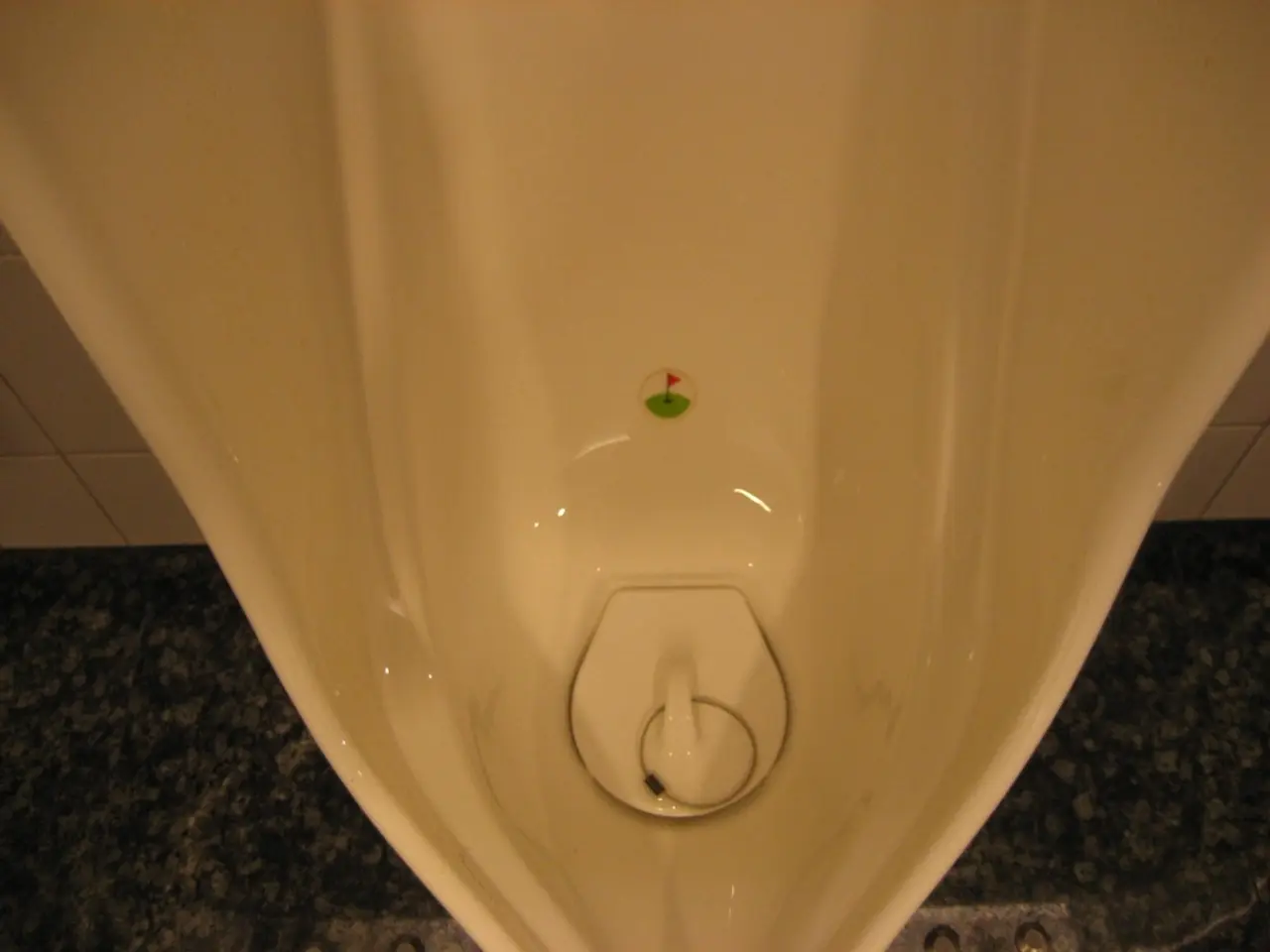Stimulating Electric Current for Excessive Bladder Activities (OAB)
In the realm of medical treatments for Overactive Bladder (OAB), a noninvasive option is gaining traction: Transcutaneous Electrical Nerve Stimulation (TENS). This form of electrical stimulation therapy, while not yet approved by the Food and Drug Administration (FDA) for OAB, is showing promising results in recent clinical trials.
Current clinical evidence, including several systematic reviews and meta-analyses, supports the effectiveness and safety of TENS, particularly Transcutaneous Tibial Nerve Stimulation (TTNS), for treating OAB symptoms.
A review of 35 studies, including 10 randomized controlled trials, found that TTNS applied mainly at 10 Hz significantly improves urinary incontinence episodes with high-certainty evidence. It also moderately improves urgency and nocturia, but shows little or no benefit for urinary frequency. The stimulation intensity in these studies was typically set at the motor threshold, with low-frequency pulses (10–20 Hz). The 10 Hz frequency showed better outcomes than 20 Hz.
TTNS is effective both for treatment-naïve patients and those with OAB symptoms refractory to anticholinergics, especially in older adults (≥60 years). A recent systematic review and meta-analysis focused on children found TENS to be more effective and safer than oxybutynin (a common pharmacologic treatment) for pediatric OAB, with greater improvement in symptoms.
Advances in technology have led to the development of a new wearable TENS device (TENSmini) designed for home use. This device showed effective tibial nerve stimulation and short-term inhibitory effects on bladder control in healthy volunteers, promising improved usability and adherence for patients. However, long-term clinical trials are still needed to confirm therapeutic benefits in OAB patients.
Despite the promising findings, it's important to note that TENS is not without its limitations. People should not use a TENS machine if they are driving, operating heavy machinery, pregnant, have epilepsy, have a pacemaker, or have other specific conditions. TENS is generally safe with little to no side effects, but there are reports of allergic skin reactions to the electrode pads and occasional complications like nausea and fainting.
Invasive electrical stimulation, such as sacral neuromodulation (SN), involves surgical implantation of electrodes within the body that stimulate one of the sacral nerve roots. While SN has been FDA-approved for OAB, it comes with its own set of side effects including pain at the site, shift in position of part of the apparatus, and the risk of infections.
In conclusion, current clinical evidence from multiple recent systematic reviews and meta-analyses demonstrates that TTNS (a form of TENS) is an effective, safe, and promising noninvasive treatment for reducing symptoms of overactive bladder, particularly urinary incontinence and urgency. With technological advances facilitating home-based therapy, TTNS could provide a viable alternative to pharmacological treatments for OAB patients.
When considering electrical nerve stimulation for OAB, it's essential to discuss the treatment with a healthcare provider. Questions to ask may include what is causing the OAB, if electrical nerve stimulation will help, which type is best, what kind of results to expect, if other treatment options should be tried first, and what lifestyle changes may help symptoms.
Symptoms of OAB include a strong, sudden urge to urinate, frequent urination, waking up to urinate at night, and incontinence. OAB occurs due to a muscle in the bladder contracting too much, known as the detrusor. Treatment of OAB involves lifestyle modifications, medications, and electrical stimulation when other options are not effective.
- The realm of science continues to explore various treatments for Overactive Bladder (OAB), with Transcutaneous Electrical Nerve Stimulation (TENS) emerging as a noninvasive, potential solution.
- TENS, while not FDA-approved for OAB yet, is showing positive results in recent clinical trials.
- Systematic reviews and meta-analyses endorse the effectiveness and safety of TENS, particularly Transcutaneous Tibial Nerve Stimulation (TTNS), for alleviating OAB symptoms.
- A compilation of 35 studies, including 10 randomized controlled trials, reveals that TTNS increases the number of effective treatments for urinary incontinence episodes with high confidence.
- TTNS also moderately enhances urgency and nocturia, yet presents little to no improvement for urinary frequency.
- In the medical field, TTNS shows promise for both treatment-naïve patients and those resistant to anticholinergics, especially in the elderly population (≥60 years).
- A recent systematic review and meta-analysis concentrating on children indicates that TENS is more efficient and safer than oxybutynin for pediatric OAB, offering superior symptom improvements.
- Advancements in technology have led to the creation of an innovative wearable TENS device (TENSmini) for home use.
- This device exhibits promising tibial nerve stimulation and short-term inhibitory effects on bladder control in healthy volunteers, potentially enhancing patient compliance.
- Long-term clinical trials are necessary to establish therapeutic benefits of TENSmini in OAB patients.
- Although TENS presents many advantages, it has certain limitations, and individuals should refrain from using it while driving, operating heavy machinery, or dealing with specific medical conditions.
- Pregnant women, those with epilepsy, pacemakers, or other relevant medical issues should not employ TENS.
- Side effects of TENS include occasional complications like nausea, fainting, and allergy-induced skin reactions to electrode pads.
- Sacral neuromodulation (SN), a type of invasive electrical stimulation, relies on surgical implantation of electrodes within the body for stimulation of sacral nerve roots.
- SN, FDA-approved for OAB, comes with its own set of side effects, including pain at the implant site, apparatus displacement, and infection risks.
- In discussions with healthcare providers about OAB treatments, inquiries should involve understanding the cause of OAB, whether electrical nerve stimulation is appropriate, the most suitable type, anticipated results, attempted alternatives, and recommended lifestyle adjustments for better management.




